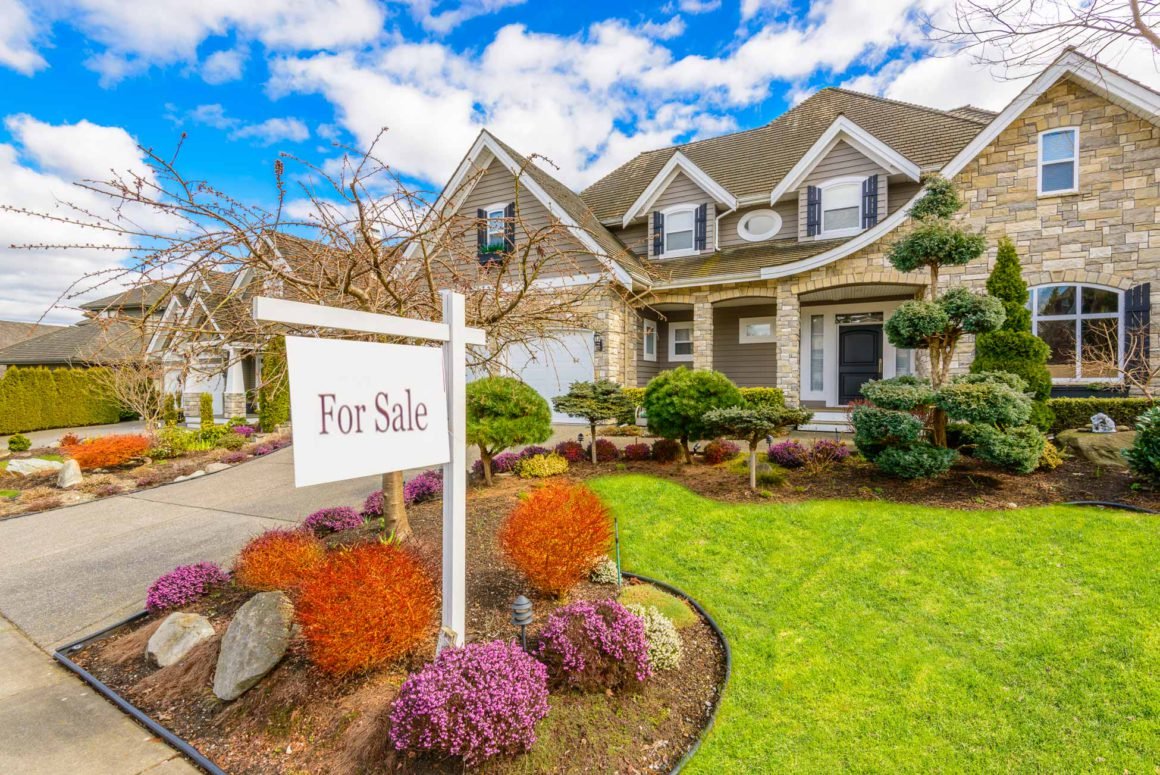Who won and who lost in property?
That’s what Corelogic’s Pain and Gain report tracks.

The latest edition analyses approximately 72,500 sales that took place over the first quarter of 2020 and showed that nationally, the portion of profit-making sales in the March quarter fell to 87.7% from 88.7% in the December quarter.
Read on to find out who won and who lost as we break up the statistics by:-
Houses vs Units
Home owners vs Investors
Length of ownership
googletag.cmd.push(function() { googletag.display(‘div-gpt-ad-1591951428937-0’); });
There has been an uplift in the portion of loss making sales over the March quarter.
But despite the potential for some fallout from COVID-19 at the end of the quarter, only a small portion of the loss making sales are a reflection of the onset of the pandemic.
The Pain and Gain results over the second half of 2020 could see an increase in the portion of loss-making sales, but the volume of sales activity may be more subdued, as vendors were less likely to test the market at the height of the pandemic.
However, assistance for mortgage holders whose jobs and incomes have been impacted by the pandemic was likely also instrumental in keeping loss making sales low.
Key findings
Profit-making sales nationally fell to 87.7% over the March quarter from 88.7% in the December Quarter.
 Total value of gross resale profits down 12% over the March quarter, although higher than over the March 2019 quarter.
Total value of gross resale profits down 12% over the March quarter, although higher than over the March 2019 quarter.
There was a 32.4% decline in transaction activity in April 2020, which then recovered over May and June.
This suggests the second half of 2020 could see an increase in loss-making sales.
Nationally, units had a higher portion of loss making sales (19.8%) compared with houses (9.7%).
Across the capital cities, most regions saw an increase in the portion of loss making sales over the March quarter.
Sydney and Hobart were the only regions that continued to see a decline in the portion of loss making sales.
The impact from COVID-19 was not a substantial uplift in loss-making home sales, but rather a reduction in sales overall.
Houses vs Units
Nationally, a high portion of houses (90.3%) resold at a profit relative to units (80.2%) over the March quarter.
This has historically been the case, with house resales typically showing 92.2% resale profitability over the past 10 years, compared with 85.3% of houses.
 Nationally, median profits for resales were $130,000 across units, and $230,000 for houses in the March quarter.
Nationally, median profits for resales were $130,000 across units, and $230,000 for houses in the March quarter.
The median loss among unprofitable unit resales were -$44,000 for units and -$49,000 for houses.
In the March quarter, both houses and units nationally saw a slight decline in profitability.
Houses saw a decline of 90 basis points on the December quarter, and units slipped 130 basis points.
Of the capital city markets, the highest portion of loss-making unit sales is across Darwin, where 68.6% of units sold for less than the previous sale price.
The high portion is off a relatively low base, with 76 units selling for a loss over the period.
However, the median losses on these sales were -$151,000, representing a more substantial loss than what was made on houses in the region (-$94,500).
The highest volume of loss making unit sales was across the ‘Rest of Queensland’ region, where 762 units re-sold at a loss, 42.2% of which were on the Gold Coast.
The loss making unit sales across the rest of Queensland represented 26.6% of total sales across the region.
This is consistent with the past few quarters, where the rest of Queensland had seen more loss making sales than any other capital city or rest of state region.
Greater Hobart had the highest portion of profit-making sales, with 97.6% of sales reselling for a gain in the March quarter.

Greater Hobart also had the smallest differential between the portions of profit-making sales among houses and units, reflecting the high demand sustained across the region.
Previous CoreLogic research has highlighted that the engineered economic slowdown around COVID-19 is likely to have an especially dampening effect on inner city unit markets.
This is particularly the case for Sydney and Melbourne, where a large demand shock, particularly in the rental market, has resulted from the temporary closure of Australian borders, where these markets have a high exposure to overseas renters.
With rental yields across Sydney and Melbourne already near record lows, a higher portion of loss-making sales in these unit markets may materialise in the coming months.
Proportion of total resales at a loss/gain, houses vs. units, March 2020 quarter
Houses
Units
Region
Pain
Gain
Pain
Gain
Sydney
5.5%
94.5%
10.4%
89.6%
Rest of NSW
6.0%
94.0%
8.4%
91.6%
Melbourne
2.7%
97.3%
15.5%
84.5%
Rest of Vic.
2.3%
97.7%
4.5%
95.5%
Brisbane
5.4%
94.6%
36.2%
63.8%
Rest of Qld
15.1%
84.9%
26.6%
73.4%
Adelaide
7.6%
92.4%
20.7%
79.3%
Rest of SA
16.9%
83.1%
22.6%
77.4%
Perth
32.6%
67.4%
55.0%
45.0%
Rest of WA
36.3%
63.7%
68.6%
31.4%
Hobart
2.3%
97.7%
2.4%
97.6%
Rest of Tas.
3.9%
96.1%
7.4%
92.6%
Darwin
39.8%
60.2%
71.0%
29.0%
Rest of NT
18.0%
82.0%
46.2%
53.8%
Australian Capital Territory
3.0%
97.0%
20.5%
79.5%
National
9.7%
90.3%
19.8%
80.2%
Cap city
9.3%
90.7%
20.0%
80.0%
Regional
10.3%
89.7%
19.2%
80.8%
Investor vs Owner Occupier Resales
Investors continue to be more likely to resell their properties at a loss compared to owner occupiers.
In the March 2020 quarter, 10.3% of properties owned by owner occupiers resold at a loss, compared with 16.8% of investment properties.
Both segments saw an increase in the portion of loss making sales, however the increase was higher in the investor segment. 
The portion of investment properties sold at a loss was up from 15.7% in the December quarter, while owner- occupied loss making sales increased from 9.8%.
Hobart was the only region across Australia where owner- occupiers saw more loss making sales than investors.
The largest divergence in loss making sales between owner occupiers and investors was in Darwin, where 39.3% of owner occupiers sold their properties at a loss, compared with 67.2% of investors.
The smallest gap was in regional Victoria, where few properties sold at a loss, and each segment saw the portion of loss-making sales at 2.5%
While nationally there is not a drastic difference between loss making sales among investors and owner occupiers, investors may be more inclined to sell properties at a loss.
This may be because the investor would view property from a purely financial standpoint, where the property is not used to live in amid falling prices, and investors may be able to claim a loss against future capital gains.
Owner occupiers selling in the March 2020 quarter had a median hold period of 9.2 years, compared with 8.3 years in the investor segment.
 Loss-making sales among investors in particular are likely to increase over the coming months, due to the impact that the COVID-19 downturn has had on the rental market.
Loss-making sales among investors in particular are likely to increase over the coming months, due to the impact that the COVID-19 downturn has had on the rental market.
Nationally, rents across all dwellings declined 0.5% over the June quarter.
The biggest rental value loss by region was 3.7% across Hobart units, followed by a 2.1% fall across Sydney units.
This is largely due to the stemmed flow of international migration where the vast majority of new migrants to Australia typically rent. Furthermore, a disproportionate decline in jobs.
across sectors such as the arts, hospitality and tourism, where workers are more likely to be in a renting household, has had a particularly damaging effect on rental demand across Hobart, inner Sydney and inner Melbourne.
These weakened rental conditions may be compounded by the institutional and political response to housing and COVID-19.
While banks have extended relief to investors and owner occupiers through the downturn, these policies are set to taper off in the second half of 2020.
Investors will eventually need to service their mortgage or sell their property in a falling market if rental demand does not return, and this seems unlikely as international borders remain closed until 2021.
Proportion of total resales at a loss/gain, owner occupied vs. investors, March 2020 quarter
PAIN
GAIN
Region
Owner Occupied
Investor
Owner Occupied
Investor
Sydney
7.0%
8.1%
93.0%
91.9%
Regional NSW
5.8%
8.4%
94.2%
91.6%
Melbourne
3.7%
10.4%
96.3%
89.6%
Regional Vic
2.5%
2.5%
97.5%
97.5%
Brisbane
8.0%
22.0%
92.0%
78.0%
Regional Qld
14.8%
25.7%
85.2%
74.3%
Adelaide
8.0%
15.1%
92.0%
84.9%
Regional SA
15.5%
24.1%
84.5%
75.9%
Perth
34.5%
44.2%
65.5%
55.8%
Regional WA
36.1%
53.8%
63.9%
46.2%
Hobart
2.6%
1.4%
97.4%
98.6%
Regional Tas
3.7%
6.2%
96.3%
93.8%
Darwin
39.3%
67.2%
60.7%
32.8%
Regional NT
25.0%
30.8%
75.0%
69.2%
Australian Capital Territory
5.0%
22.3%
95.0%
77.7%
National
10.3%
16.8%
89.7%
83.2%
Cap city
10.5%
16.2%
89.5%
83.8%
Regional
10.0%
18.1%
90.0%
81.9%
Over the March 2020 quarter, profit-making sales had a median hold period of 9.4 years, while loss-making sales were typically held for 6.6 years.
The typical hold period of loss-making sales varied significantly across different regions, which is largely tied to market conditions and the differences in property cycles across Australia.
For example, loss-making sales among Melbourne houses had the lowest typical hold period, at just 2.6 years.
 During that period, the aggregate Melbourne dwelling market saw a peak to trough decline of 11.1% in value, with loss making sales in the March quarter reflecting values that were yet to return to their peak.
During that period, the aggregate Melbourne dwelling market saw a peak to trough decline of 11.1% in value, with loss making sales in the March quarter reflecting values that were yet to return to their peak.
Meanwhile, areas that have endured longer downturns due to declines in the mining sector, extreme weather conditions, or sustained, high levels of new dwelling supply have seen losses off the back of much longer hold periods.
Regional Queensland is an example of this, where typical hold periods for loss-making unit sales were over 10 years.
Almost 400 loss making unit sales occurred across regional Queensland, where the property had been held for longer than 10 years.
The highest frequency of this sale type was on the Gold Coast (160 sales), followed by Cairns (90 sales).
 While different regions have varied, broadly the adage of ‘time in the market’ over ‘timing the market’ holds true, with higher nominal gains associated with longer hold periods.
While different regions have varied, broadly the adage of ‘time in the market’ over ‘timing the market’ holds true, with higher nominal gains associated with longer hold periods.
This is demonstrated in the chart below.
The second chart shows that the highest frequency of hold periods over the March quarter were those held between 4 and 6 years.
Over the coming months, more recent purchases are likely to be tested by employment conditions in the wake of COVID19.
As fiscal stimulus and mortgage holidays wind back, property prices decline and unemployment remains high, there is likely to be a higher concentration of loss-making sales where the property has been held for a relatively short amount of time.

googletag.cmd.push(function() { googletag.display(‘div-gpt-ad-1592314976732-0’); });
Read more: propertyupdate.com.au

